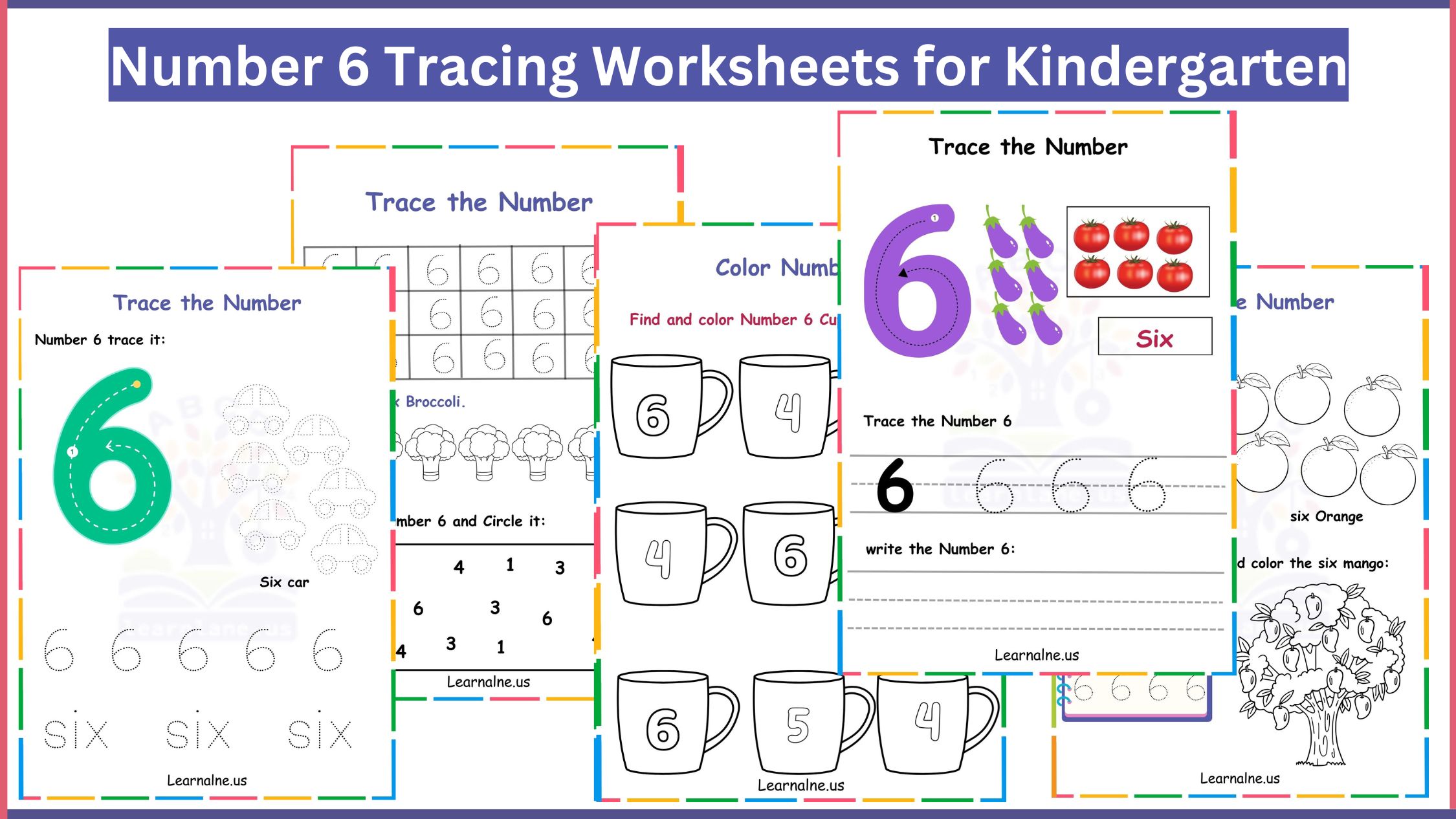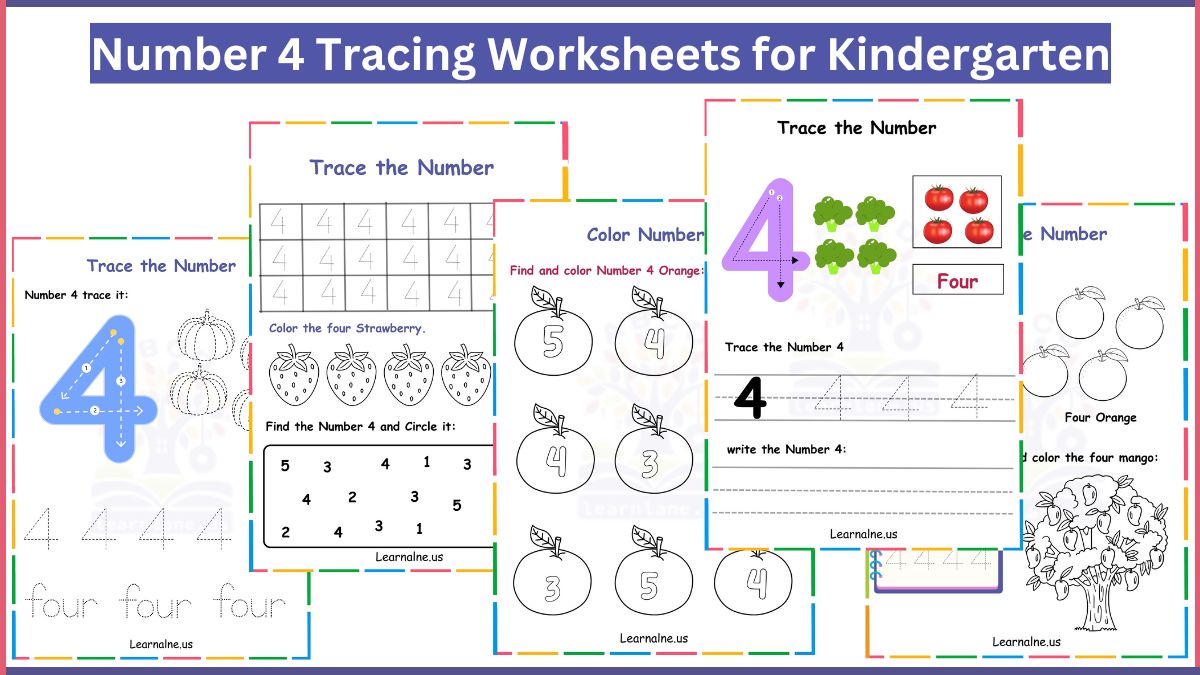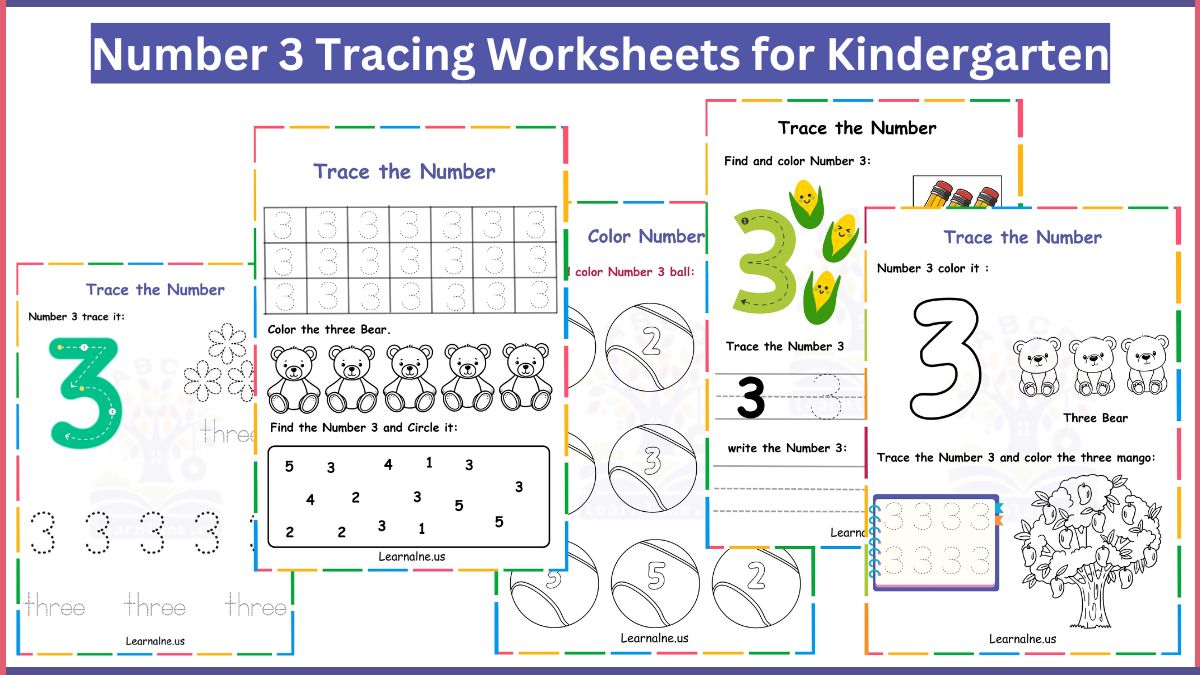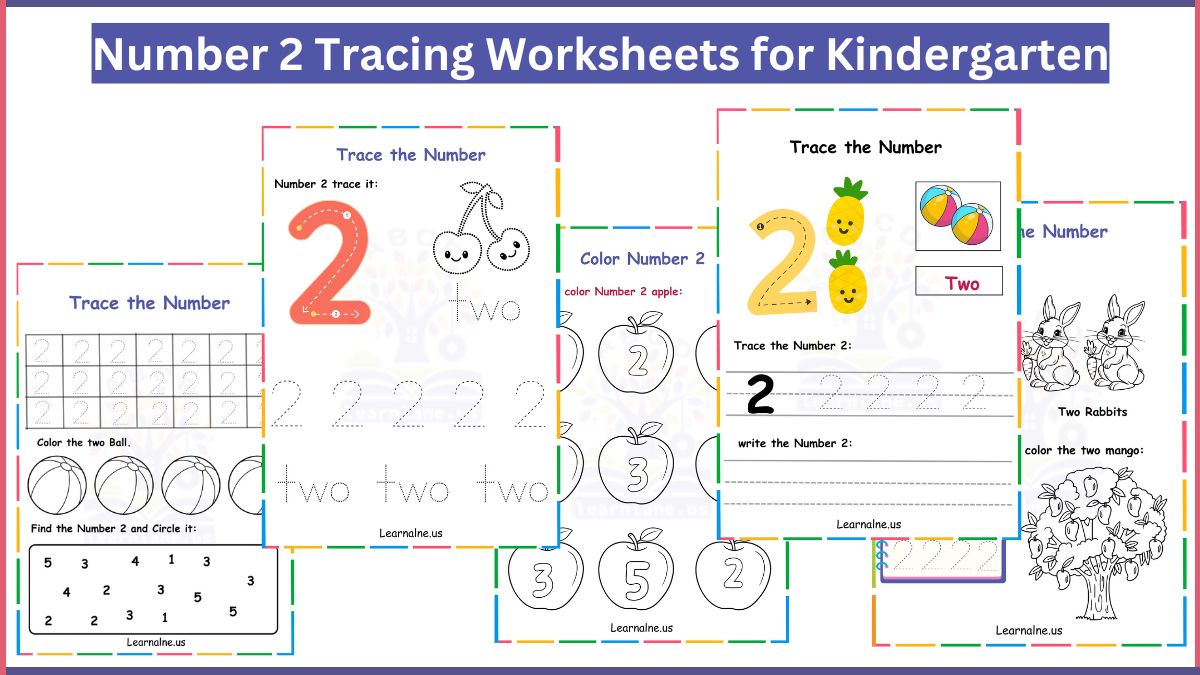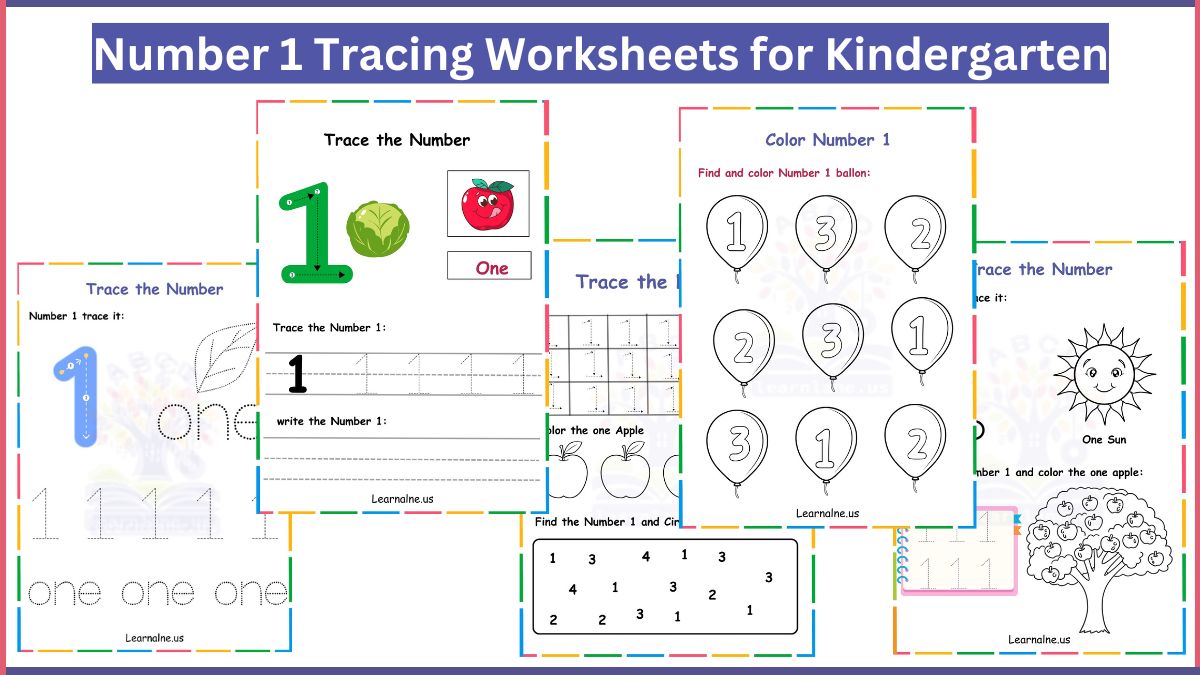Looking for free circle tracing worksheets for preschoolers that are easy to use and support early childhood development? These tracing activities are perfect for children ages 3–5 who are just beginning to explore shapes, develop fine motor control, and learn how to hold a pencil or crayon.
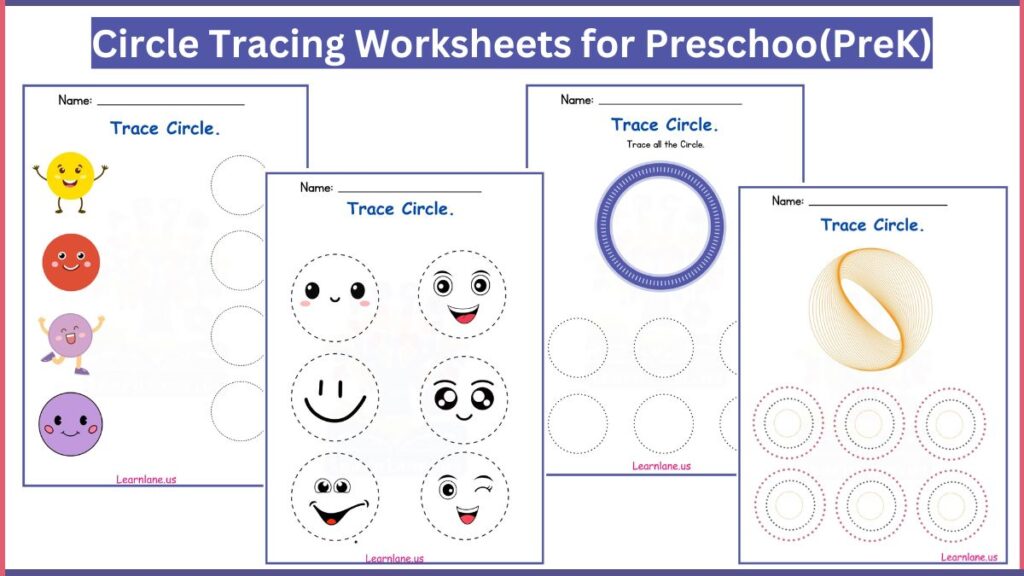
Circle tracing is a key foundational activity that prepares preschoolers for writing, drawing, and early math skills like counting and pattern recognition. Whether you’re a parent, teacher, or homeschooler, these worksheets are easy to recreate, printable in plain text, and effective for preschool shape practice at home or in the classroom. Whether at home or in the classroom, these sheets support pencil control, fine motor development, and early shape recognition.
Circle Tracing Worksheets for Preschoolers
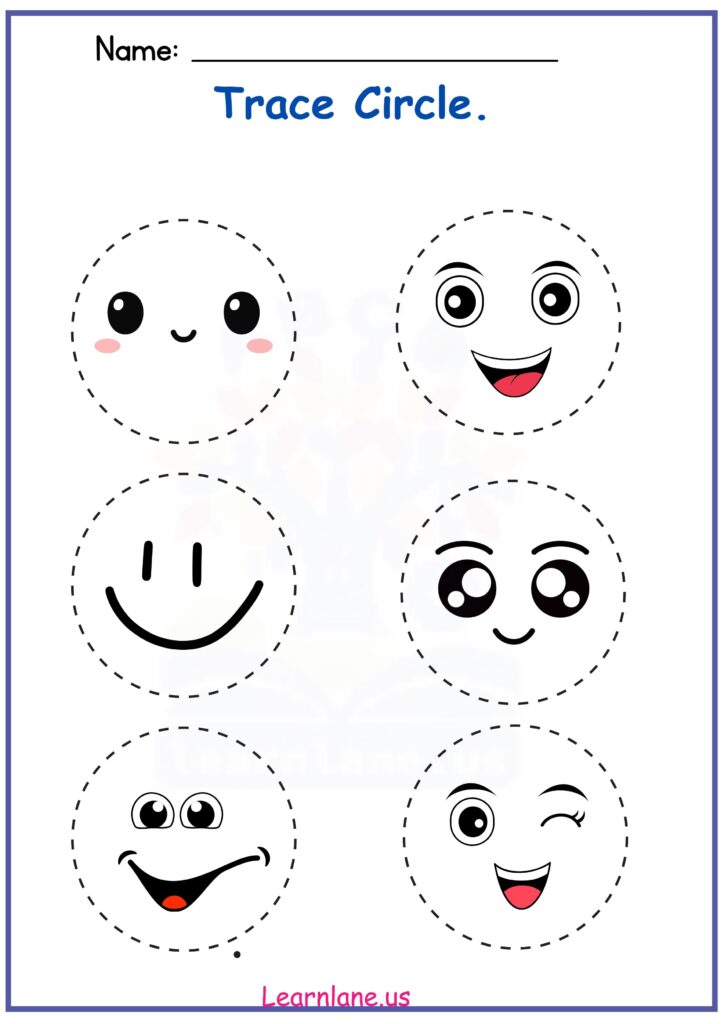
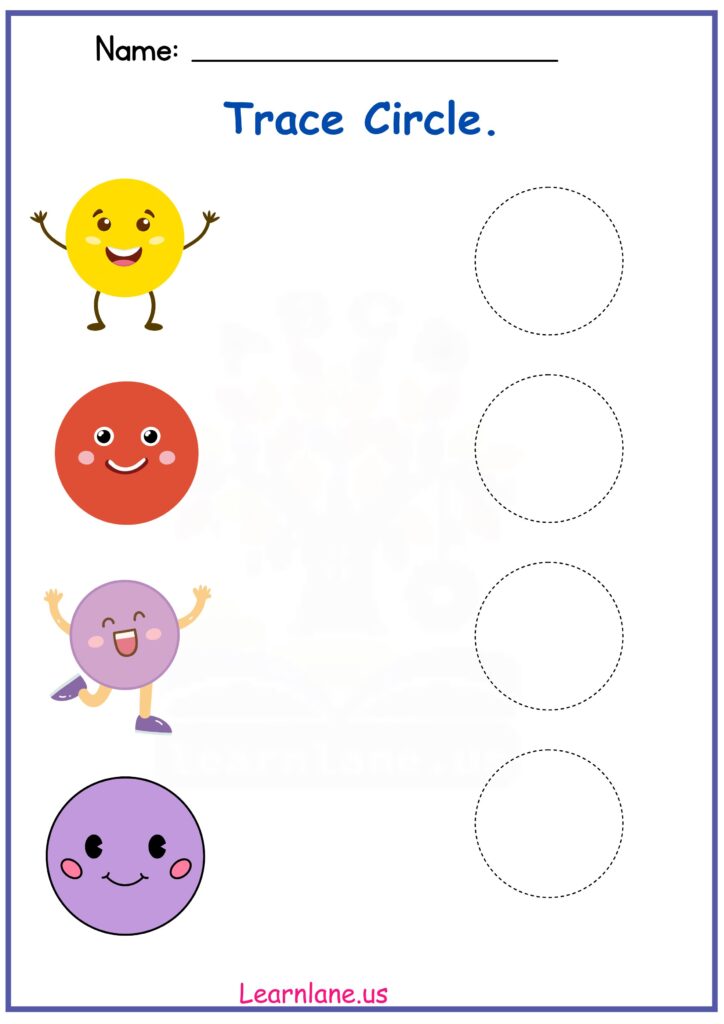
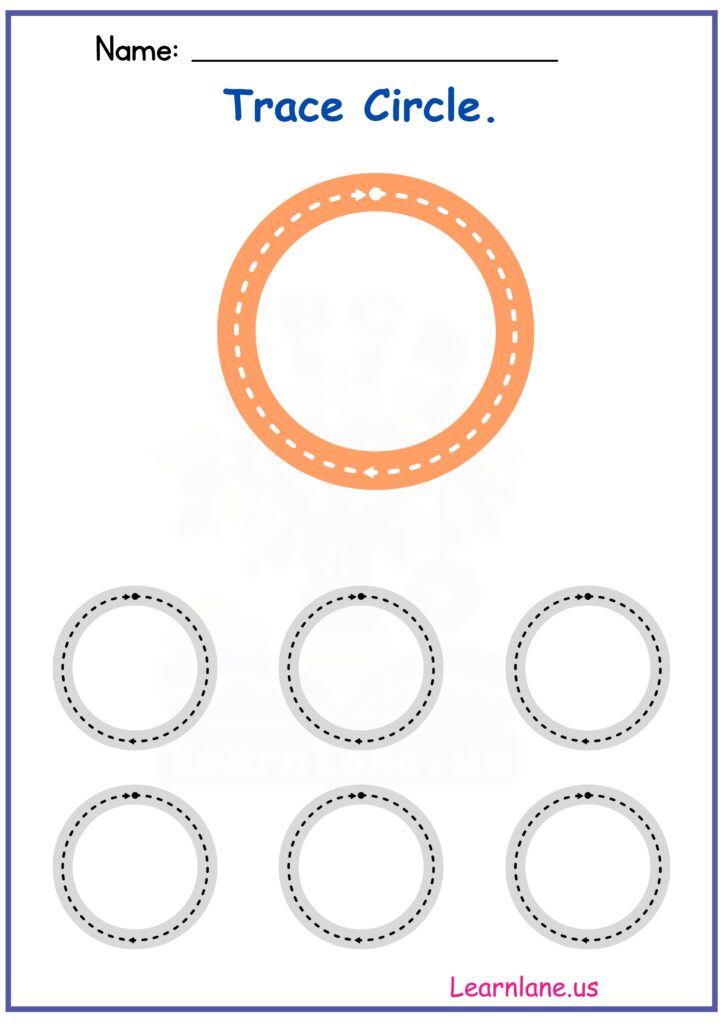
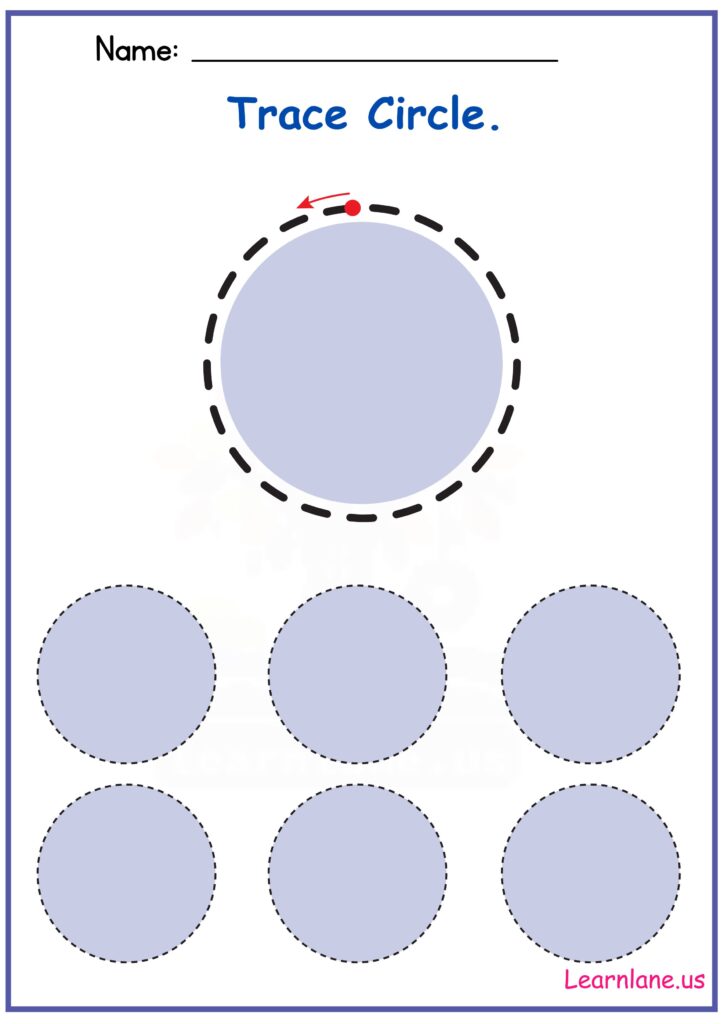
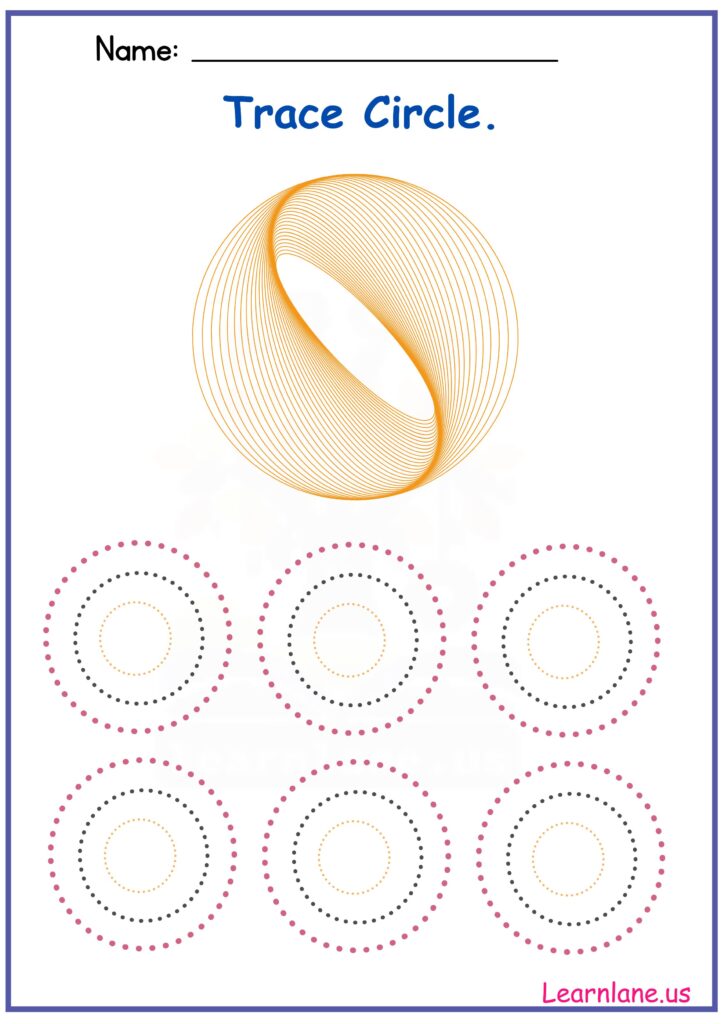

Circle Tracing for Fine Motor Skills and Early Learning
Tracing circles builds control, strength, and hand-eye coordination. It’s one of the most effective ways to develop fine motor skills before formal writing. Circles are also among the first shapes young children learn to identify in everyday objects—clocks, wheels, buttons. These preschool shape worksheets printable help reinforce that recognition.
Why Circle Tracing Matters in Early Learning
Circle tracing helps children strengthen fine motor skills, improve hand-eye coordination, and develop pencil grip control—all of which are essential for writing readiness. Repeatedly tracing a smooth, curved shape like a circle helps train young hands to move with control and precision, preparing kids for writing letters, numbers, and other shapes.
Preschoolers also learn shape recognition through repeated exposure. Circles are one of the first shapes children identify in the world around them—think wheels, balls, and clocks. By practicing with simple circle tracing worksheets, children begin to connect visual patterns with movement, which boosts early geometry and spatial understanding.
Each worksheet has a clean, focused design. Some use 5–6 large dotted circles (about 3 inches wide), spaced evenly. Others use smaller or more frequent circles for practice as the child progresses. One layout features 4 circles in a square pattern. Another includes 2 rows of 3 circles, perfect for building tracing rhythm and consistency. All sheets are print-ready and distraction-free.
How to Teach Tracing to Preschoolers?
Begin with finger tracing. Then demonstrate using a crayon or marker. Use simple cues like “start at the top” or “go around slowly.” Thick crayons are easier for younger children to hold. Encourage them to trace each circle more than once using different colors. Keep sessions short and celebrate effort—not perfection.
Tracing Circles for 3-Year-Olds and Up
These worksheets are suitable for 3-year-olds and preschoolers. For younger learners, use pages with fewer and larger circles. Older children can try pages with tighter spacing or smaller circles. You can also:
- Number the circles to include counting
- Assign colors for simple following-directions tasks
- Add a free-draw section for copying the shape after tracing
- Try sensory play by placing sheets under trays of rice or flour for finger tracing
Easy to Print or Recreate by Hand
While you can print each worksheet directly, you can also draw them yourself.
Example:
- Sketch 6 dotted-line circles (2 inches wide), arranged in two rows. Add a prompt: “Trace and count each circle.”
- These free preschool tracing worksheets are easy to customize, reuse, and adapt to different learning styles.
FAQs
How do they support fine motor development?
Tracing helps preschoolers improve coordination, muscle control, and spatial awareness. Repeated tracing of curved lines prepares them for writing letters like “O,” “Q,” and “C.”
Can kids trace more than once?
Yes! You can reprint the worksheets as needed, or place them in plastic sleeves for dry-erase reuse. Kids can also use different colors for multiple passes, making the activity more engaging and creative.
What are free printable circle tracing worksheets for preschoolers?
Free printable circle tracing worksheets for preschoolers are clean, non-themed activity sheets with 4–6 dotted circles (typically 2–3 inches wide). These worksheets include basic prompts like “Trace Circle” and support shape recognition and pencil control. You can print them directly or recreate them by drawing two rows of three dotted circles on blank paper.
How can I use preschool tracing worksheets at home?
Use them during short practice sessions—5 to 10 minutes—before or after play. Ask your child to trace circles using crayons or markers. You can draw six 2-inch dotted circles yourself or print ready-made pages. Reuse them by placing the sheet in a clear sleeve.
How can teachers use circle tracing worksheets in the classroom?
Set up a tracing center with printed worksheets. Use a 2×2 or 2×3 circle layout. Laminate sheets for repeated use with dry-erase markers. Add counting prompts or color codes for variety. These sheets work well for both small groups and independent learning.
How can circle tracing worksheets teach counting?
Label each circle with numbers (1 to 5). Ask children to trace and count aloud. A worksheet with 6 circles in two rows becomes both a tracing and counting exercise. This builds math readiness along with motor control.
What’s a sensory way to use tracing worksheets?
Place the worksheet under a tray of flour or rice. Let children finger-trace the dotted circles. Use 3–5 large circles for better visibility. This adds tactile feedback and helps children who learn best through touch.
How does circle tracing help preschool development?
Circle tracing builds fine motor skills by strengthening hand muscles. It improves eye-hand coordination and supports pencil grip. These skills prepare preschoolers for writing letters and drawing shapes.
What shape skills do kids learn from tracing circles?
Children learn to recognize, name, and describe circles. Tracing reinforces the round shape through repetition. It builds awareness of curves, symmetry, and spatial form, that are key early geometry concepts.
How should I teach tracing to a preschooler?
Start by demonstrating with your finger. Then guide them with a crayon. Say, “Start at the top and go around.” Keep the tone positive and practice short. Use thick crayons for easier grip and encourage effort.
How often should my child do tracing activities?
2–3 sessions per week is enough for beginners. Each session can be 5–10 minutes long. Repetition over time is better than long practice. Use variety to keep kids engaged.

